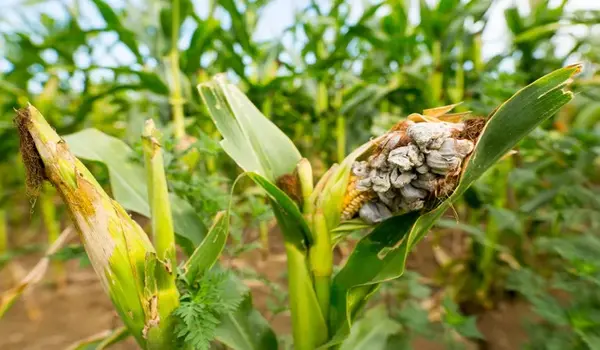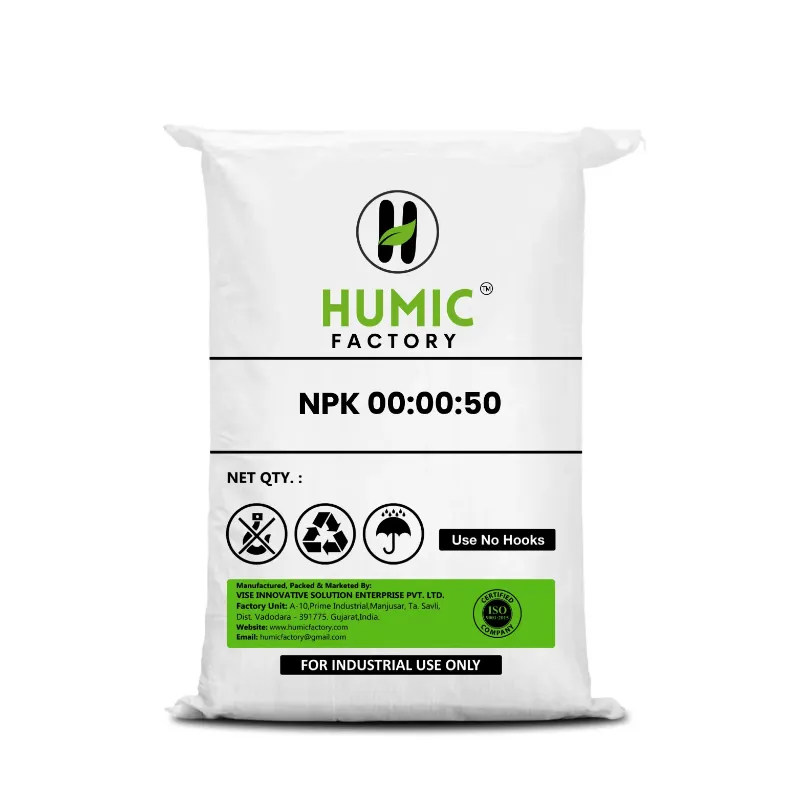Fungal infections are one of the most common threats to crop health and productivity. They can spread rapidly, leading to significant yield losses and affecting the quality of the produce. Detecting and managing these infections at an early stage is crucial for preventing widespread damage. Fortunately, with modern agricultural practices and tools, farmers can minimize the impact of fungal diseases on their crops. In this blog, we’ll explore how farmers can detect fungal infections early, the common signs to look out for, and the best management practices to control and prevent fungal diseases in crops. Fungal infections in crops are caused by fungi that thrive in various environmental conditions, especially in humid or moist environments. These fungi invade plant tissues, feeding on the plants' nutrients and often releasing toxins. Some common fungal diseases include powdery mildew, downy mildew, rust, blight, and root rot. These infections can affect leaves, stems, roots, and fruits, leading to stunted growth, reduced yields, and even the death of the plant if not addressed promptly. Therefore, early detection and management are essential for mitigating the effects of these diseases. To manage fungal infections effectively, farmers need to recognize the early signs of infection. Here are some common symptoms of fungal infections in crops:1. Understanding Fungal Infections in Crops
2. Early Detection: Signs of Fungal Infections
Spots on Leaves: Fungi often cause leaf spots, which can appear as dark, yellow, or white spots on the surface of leaves. These spots may grow over time, leading to leaf decay or premature leaf drop.
Powdery Growth: Powdery mildew, a common fungal disease, leaves a white or gray powdery substance on the surface of leaves, stems, and flowers.
Wilting: Certain fungal infections, like root rot, can cause plants to wilt even when they have adequate water. This is because the fungi damage the roots, preventing the plant from absorbing nutrients.
Mold or Fungal Growth: In some cases, farmers may see visible mold or fungal growth on the soil, stems, or fruits.
Discoloration of Stems or Roots: Fungal infections like blight or root rot can cause discoloration in plant stems and roots. The plant tissue may turn brown, black, or mushy.
Deformed Fruits and Flowers: Infected fruits or flowers may appear deformed, discolored, or smaller than usual. In some cases, fungi produce toxins that cause fruits to rot from the inside.
3. Monitoring Techniques for Early Detection
Early detection of fungal infections can significantly reduce the spread of the disease. Farmers can use the following techniques to monitor their crops for early signs of fungal infections:
Regular Field Inspections: One of the simplest ways to detect fungal infections early is to conduct regular field inspections. By checking plants closely for any signs of infection, farmers can catch diseases in their early stages.
Soil Testing: Since many fungal diseases start in the soil, it’s essential to test the soil for the presence of harmful fungi. Regular soil testing can help farmers identify the risk of fungal diseases before they spread to the plants.
Weather Monitoring: Fungi thrive in specific environmental conditions, such as high humidity, wet weather, or warm temperatures. Monitoring weather conditions can help farmers predict when fungal infections are more likely to occur and take preventive action.
Use of Sensors and Drones: Advanced technology like sensors and drones can help farmers detect early signs of fungal diseases. Sensors can measure soil moisture and temperature, both of which influence fungal growth, while drones can capture high-resolution images of large fields to detect early symptoms that may not be visible from ground level.
4. Management Practices for Fungal Infections
Once fungal infections are detected, farmers must act quickly to manage and contain the spread of the disease. Here are some effective management practices:
Fungicides: The application of fungicides is one of the most common ways to manage fungal infections. Farmers should choose the right fungicide based on the type of fungal infection and apply it according to the manufacturer’s instructions. However, overuse of fungicides can lead to resistance, so it’s essential to rotate fungicide types.
Biological Control: Some farmers opt for biological control methods, which involve introducing beneficial organisms like Trichoderma or Bacillus species that naturally combat harmful fungi. These biological agents help reduce the reliance on chemical fungicides and promote a healthier ecosystem.
Cultural Practices: Adjusting cultural practices is a proactive way to prevent fungal infections. For example, farmers can:
Water Wisely: Overwatering can create the damp conditions fungi love. Farmers should ensure proper irrigation methods to avoid waterlogging, such as drip irrigation, which keeps water off the foliage and reduces humidity.
Crop Rotation: Rotating crops helps break the life cycle of many soil-borne fungi, reducing the risk of repeated infections. Farmers should avoid planting the same crop or related species in the same field year after year.
Mulching: Organic mulches can help suppress fungal spores in the soil and prevent them from splashing onto plant leaves during rainfall or irrigation.
Proper Spacing: Properly spaced plants allow for better air circulation, which helps to reduce the humidity around plants and slow fungal growth.
Sanitation Practices: Cleaning up plant debris, fallen leaves, and other organic matter from the field is critical in preventing fungal spores from overwintering and reinfecting plants in the next growing season. Farmers should also sanitize tools and equipment to avoid spreading fungi from infected plants to healthy ones.
5. Integrated Pest Management (IPM) for Fungal Diseases
Farmers can implement Integrated Pest Management (IPM) strategies to control fungal diseases sustainably. IPM combines various techniques, including biological control, cultural practices, and chemical treatments, to minimize the risk of crop damage while promoting long-term crop health.
By monitoring fields regularly and using targeted fungicide applications only when necessary, farmers can reduce the amount of chemicals applied to their crops, preventing resistance and minimizing environmental harm.
6. Importance of Resistant Varieties
Another way farmers can manage fungal infections is by choosing disease-resistant crop varieties. Many seed companies offer crops bred to resist specific fungal diseases. While these varieties may not be entirely immune to infection, they are less likely to suffer significant damage, allowing farmers to reduce their reliance on fungicides.
Resistant varieties, combined with good agricultural practices, offer a robust defense against fungal infections.
7. The Role of Organic Practices
For organic farmers, managing fungal infections can be challenging, as synthetic fungicides are not an option. However, organic farming methods provide several ways to prevent and manage fungal diseases effectively:
Compost and Organic Matter: Applying compost and organic matter to the soil encourages the growth of beneficial microbes that compete with harmful fungi, reducing the chances of infection.
Organic Fungicides: Organic fungicides, such as those made from neem oil, copper, or sulfur, can be used to control fungal infections while adhering to organic farming standards.
Crop Diversity: Planting a diverse range of crops can create a more balanced ecosystem, reducing the overall risk of fungal infections spreading across a monoculture.
Conclusion
Early detection and management of fungal infections are critical for maintaining crop health and productivity. By recognizing the signs of fungal infections, using monitoring tools, and implementing proactive management practices, farmers can minimize the impact of these diseases on their crops. Whether using fungicides, biological control methods, or adopting cultural practices, an integrated approach is key to controlling fungal infections in an eco-friendly and sustainable way.
Farmers should also consider incorporating resistant crop varieties and exploring organic options to reduce their reliance on chemical treatments. By taking these steps, they can safeguard their crops and ensure a healthy harvest year after year.





